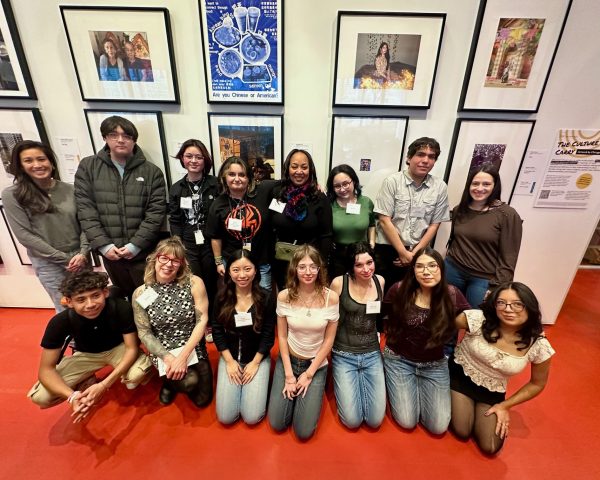Connecting with the world through language, from home
Room 352, shared by Ms. Paganelli and Ms. Tacke, where all the Italian classes took place. (Photo courtesy of Ms. Paganelli)
Reminiscing on traditions from in-person learning, Ms. Girardi, Lane’s only German teacher, recalls her use of little plush bears that her students would pass around in class. It was a fun activity that encouraged them to practice their German since every student wanted to have the bears.
Many language teachers miss the small traditions in their pre-pandemic daily routines. Ms. Mendoza, a heritage and level one Spanish teacher, said her students “would go to the hallway and do face-to-face conversations and rotate,” a fun activity that helped students focus in a different study area.
In the same way, Ms. Paganelli, an Italian and level one Spanish teacher, shared how useful it was to be able to walk around the classroom when she could “actually see what they’re writing, and can pose questions” to test her students’ understanding.
Experience from before the pandemic and efforts to adapt worked together to create new learning outlets and problem solve. Ms. Ramovic, level one and two Spanish teacher, said her classroom library, which took a long time to build, helped her encourage students to read in Spanish.
“I didn’t want to ask students to buy novels, which is what we’ve done in the past, so I wrote novels,” Ramovic said. “And it just made me realize that I can create more resources for my students to prevent them from having to spend extra money.”
The foreign language teachers learned to take advantage not only of personal creative resources but also Google Classroom, Pear Deck, Jamboard, and even Bitmoji Classroom.
Among new remote learning habits, a lot of foreign language attention is focused on younger students and how they can stay connected with the community while online. With less popular language choices, like Italian, students get to know each other more personally over the years.
“One of the great things about Italian is that when you get to AP, usually you were at level one together or level two together, or three years, so there is this sense of family,” Paganelli says. She contrasts with her other classes, saying, “It’s a little bit different in Spanish because the program is so big. It’s very rare that you would be in the same class twice.”
The foreign language department is constantly working on supporting students in getting to know each other under the current circumstances. Girardi shared about the importance of class boundaries and how they help students. Like most of the other language teachers, she emphasizes that “for building a community of learners, having cameras on is a must.” Setting an atmosphere where new students get to see each other, even though a screen, makes a big difference in the way they participate and retain information, she said.
In the same way, there is a lot of work being done in the AP foreign language classrooms.
“I continue to see the determination, I continue to see the intrinsic motivation, I continue to see those things in them that allow for them to still be able to reach that material and do good quality work in the course,” said Ms. Perez, AP Spanish Literature and Culture and Honors Spanish 3 teacher.
With hope, the language department is looking forward to seeing its students succeed.
“We care about you,” Paganelli said. “We want to hear your input. We want to see you, we want to see you, we want to see your faces so there’s more of a human sense to our classes.”
The Spanish teachers acknowledge the hard work students are putting in: “I really commend them for doing what they’re supposed to be doing, and just learn about how far they come from last spring to now and what good things they have learned about themselves at this time,” Mendoza said.
Perez said she is encouraged by looking at the future.
“When we return it is my hope that we’ll all resurface with more strength that we hadn’t had to step into before. That we come out of this stronger,” she said.
Your donations directly fund the Lane Tech student journalism program—covering essential costs like website hosting and technology not supported by our school or district. Your generosity empowers our student reporters to investigate, write, and publish impactful stories that matter to our school community.
This website is more than a publishing platform—it's an archive, a research tool, and a source of truth. Every dollar helps us preserve and grow this resource so future students can learn from and build on the work being done today.
Thank you for supporting the next generation of journalists at Lane Tech College Prep!




